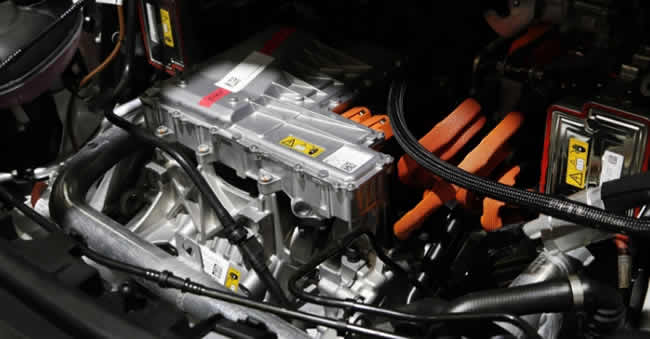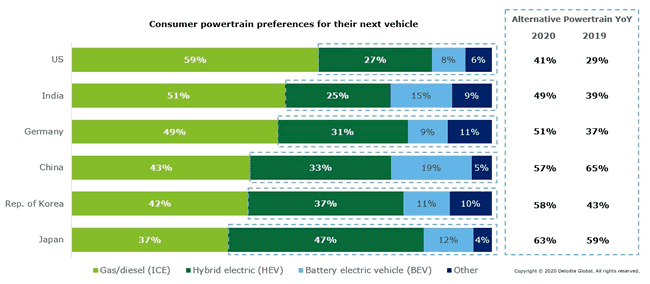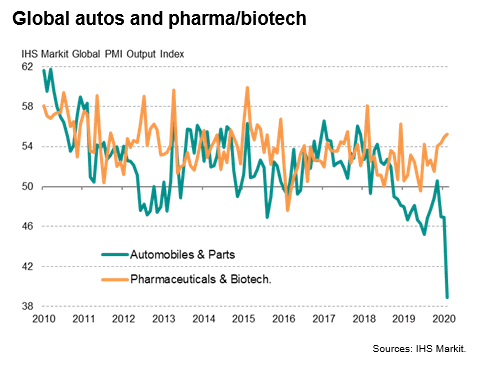The automotive industry is transforming as part of the more significant shifts regarding how we will live and move around in the future against the backdrop of broader geographical, societal, regulatory, and technological changes.
Within that holistic picture of mobility, the automotive industry goes through digital transformation on multiple levels. The car industry is ahead of others in deploying smart factory and Industry 4.0 initiatives.
At the same time, new ecosystems take shape to meet changing demands/expectations of consumers and stakeholders in the mobility ecosystem as the automotive industry transforms beyond digital. The major challenges of our times all affect the future of the automotive industry one way or another and are key to build a sustainable digital transformation strategy roadmap. And how else could it be?

CASE: connected, autonomous, shared and electric vehicles in context
In recent years, the investments of OEMs in CASE (connected, autonomous, shared, and electric) cars and mobility have been growing fast, whereby the expectations regarding concepts such as Mobility-as-a-Service and autonomous vehicles tended to be extremely optimistic, among others from a timescale and feasibility perspective.
Even for electric vehicles (EV) and hybrid electric cars (HEV), the picture today looks less rosy than it did only a few years ago with disappointing results reported by several players. Yet, change is afoot across the globe, even if ample challenges remain.
Connected vehicles have been doing better, but looking at the priorities of today’s consumer who wants those digital services and immersive experiences that require embedded connectivity, that’s less of a surprise. And like it or not but cars are still – expensive, for households and society – status symbols with tech as a competitive differentiator. It’s clear that the new mobile cellular technologies around the corner will further drive that market, even if consumers do have some doubts about specific aspects of the bigger connected automotive picture.
Nevertheless, most agree that all aspects of CASE are a matter of time – albeit more than expected.
Obviously, ‘CASE’ is not a thing: we talk about ‘categories’ of vehicles depending on specific characteristics. These categories overlap and come in different flavors and degrees. Even autonomous vehicles (AVs) come in varying degrees of autonomy, whereby some doubt there will ever be a fully autonomous car.
More importantly, various types of vehicles will be used in different circumstances and with various ownership/sharing models whereby it’s yet to be seen what works and whereby we’ll use a mix of vehicles depending on contextual transportation needs.
It’s already clear that, among others, ‘smart cities‘ and how they organize mobility and the ways we work will be essential factors here.
And it’s essential to look holistically at the broader challenges and at changing societal and demographic factors. Examples of -connected – shifts include:
- Urbanization – moving to cities.
- Electrification – in virtually all areas, not just automotive.
- The preferences of younger generations
- The future of work – where and how.
- Mobility requirements of aging populations
- The organization of cities but also of transportation and mobility on macro-levels.
- A stronger focus on climate, pollution and sustainability by companies and consumers alike.
- Various regulations, among others with regards to emissions.
So, it’s not just the shift to mobility as a service in general; it’s a shift to mobility as a contextual service, related with, for instance, place and purpose. From the future – and uncertainties – back to the present and a less distant future.
Electric vehicles (EVs): automotive consumer attitudes
In the shorter term, most attention goes to connected cars (with again ecosystems of various players) and, of course, to electric vehicles. A look at the latter from a consumer perspective.
Even if so far, EV sales have been relatively disappointing, demand seems to be accelerating. According to Deloitte’s 2020 automotive consumer survey of more than 35,000 driving-aged consumers, from 20 countries, across the globe, even in the US, 41 percent of consumers said they are actively considering an alternative-fuel vehicle (including hybrid electric, and battery-powered electric) in the future.
That’s a pretty impressive increase compared with 2019 when only 29 percent of respondents said so and despite the more restrained environmental policy and low fuel prices, which are two factors that kept the interest in hybrid and fully electric vehicles at bay in the US. The graphic from the announcement of the report below shows the interest of consumers from other markets in gas/diesel, hybrid electric (HEV), battery-powered electric (BEV), and the alternatives.

EV charging infrastructure remains a concern for consumers; in countries such as the US, India, and Japan, to name some, lack of EV charging infrastructure is even the main concern for consumers.
In general, consumers also still need to be convinced that EV charging infrastructure and certainly battery range is worth buying an electric vehicle according to the 2020 Deloitte Global Automotive Consumer Study.
It’s a story that many automotive industry players have been telling for quite some time now. To increase the share of EVs, consumers will need to be motivated; infrastructure needs to be present, costs need to go down, and, all in all, consumers expect the same convenience as they experience with vehicles with internal combustion engines (ICE). That’s also the key message of Craig Giffi, vice chairman, Deloitte Insights global managing principal, Deloitte LLP.
In the context of infrastructure, policymakers continue their efforts as they want their environmental goals to be reached. However, here as well, depending on the country and region, this is an ecosystem play.
An interesting takeaway in that sense is that quite some consumers don’t seem to worry too much that the charging of electric vehicles takes time.
In the US, over a quarter (27 percent) of consumers say they are willing to wait between 30 minutes and one hour to charge an electric vehicle fully. In several countries, this percentage is even higher: in Germany, 30 percent of consumers are willing to wait so long, in the Republic of Korea 29 percent, in India 35 percent and in China even 40 percent.
If these percentages turn out to correspond with what consumers actually would do instead of say, the opportunities for policymakers and various economic actors to increase efforts on infrastructure together could be substantial. Oil and gas brands are operating gas stations and have ample ways to increase revenues by turning themselves into mini retail centers, as explained in a recent interview on retail facilities since people want to do something while their EV is charging.
But also think about cities, large retailers, hotels, and many other types of facilities that need to start offering EV charging possibilities (hotels, for instance, for meetings). And in the broader scope of commercial real estate, there are, of course, the realities of a changing workforce, and in different regions and countries, varying regulations that require EV charging possibilities.
Obviously, the time it takes to charge electric vehicles will decrease as battery technologies evolve as well.
For Deloitte, the message to the automotive industry is that automakers still have reason to invest in developing new powertrain technologies. Interest in alternative-fuel vehicles is rising in several global markets, and in many countries, policymakers are implementing more robust environmental policies.
Economic uncertainties and challenges in the automotive industry
Until we see the impact of CASE and ‘peak car’ happen, the automotive industry has quite some other challenges ahead, as you know. These have an impact on investments in R&D and decisions regarding the best ways to take towards next mobility stages.
After quite a long period of growth since the great recession, the automotive industry is facing tough times again. Since the record year, 2017, registrations and sales of new vehicles (and of passenger cars) have been dropping. For 2020 there was hope that the industry might be able to breathe again in some regions, but the coronavirus outbreak smashed these hopes.

The coronavirus outbreak thus far hit the car industry the most. According to Purchasing Managers’ Index (PMI) updates, released by IHS Markit early March 2020, worldwide growth plunged in February with eight out of 23 sectors seeing record falls in output. IHS Markit: “The steepest decline was reported in the auto industry, which saw by far the steepest drop in production on record (since late-2009). Existing malaise due to weak car demand was exacerbated by the impact of factory closures and supply chain disruptions from China.”
The slowdown in China that started long before the outbreak is likely to continue with declining consumer sales as China has been investing a lot in its public transportation modernization, as it has done in smart city projects.
Other uncertainties that caused a decline in sales and slowdown in, among others Europe, haven’t been resolved yet. Trade wars aren’t over. There is no post-Brexit deal between the EU and the UK; the list goes on. Once supply chains are up and running again and as the impact of these and other uncertainties, among others on the regulatory front, become more apparent there are still ample challenges with regards to connected, autonomous, shared, and electric cars.

